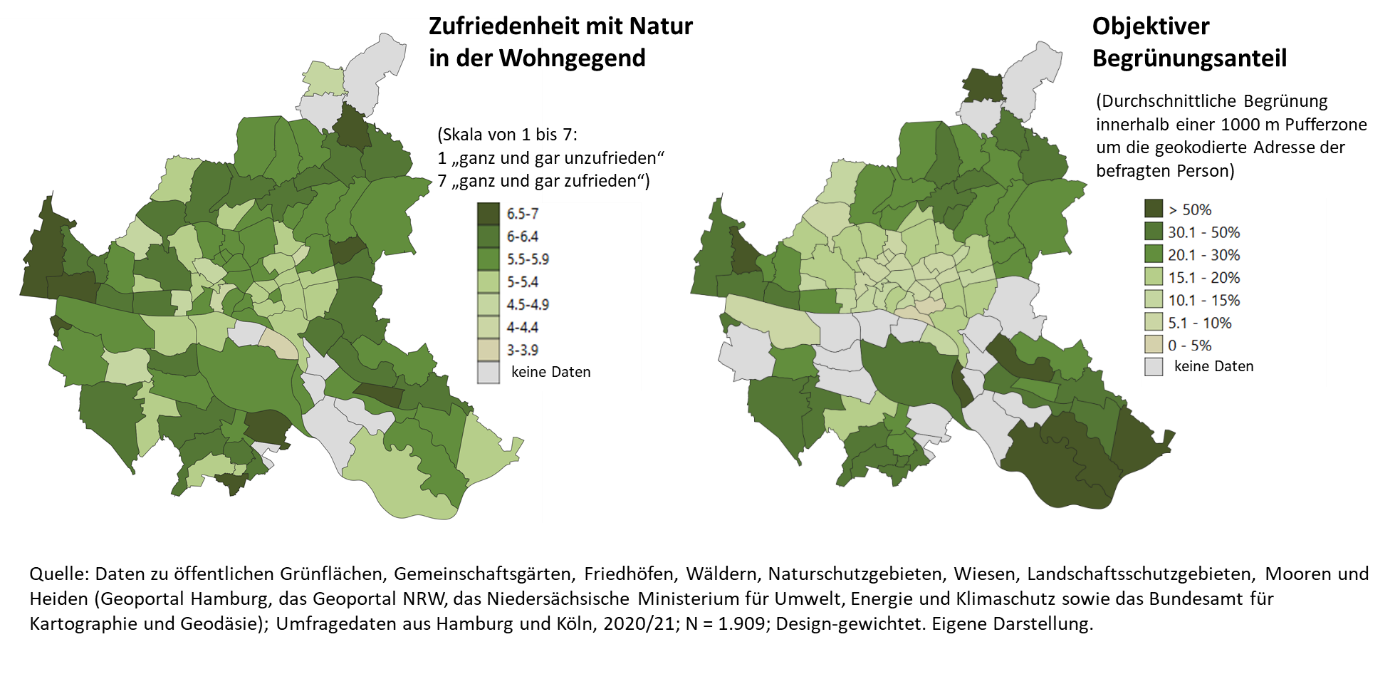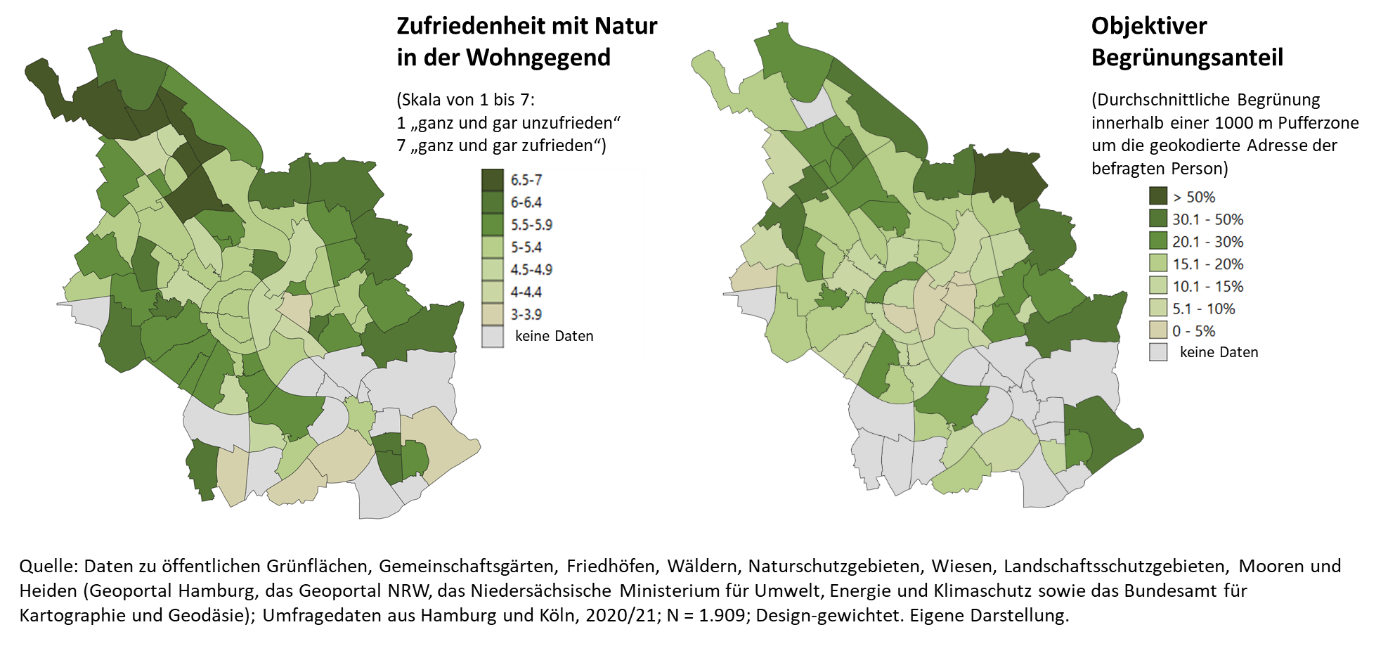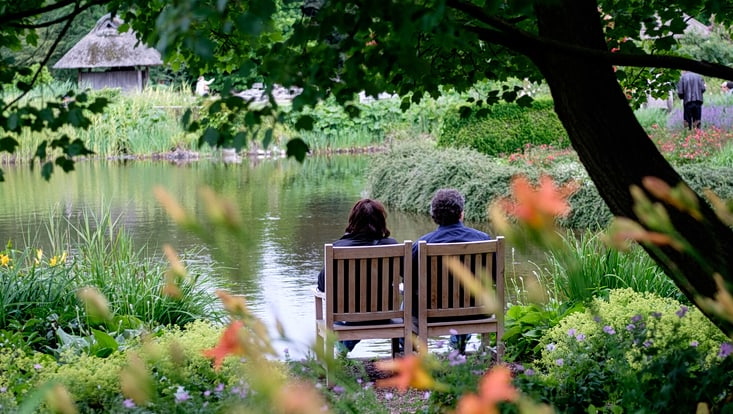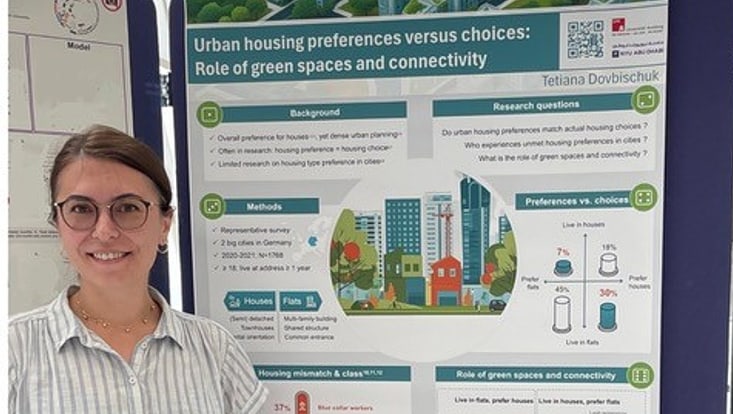Nature satisfaction and greenery availability in neighborhoods in Hamburg and Cologne
16 November 2023
Living in a green environment can have positive effects on mental and physical well-being, as well as residential satisfaction. Studies show that proximity to nature, for example, can increase physical activity and reduce stress. Additionally, green spaces provide good opportunities for social cohesion.
In large cities like Hamburg and Cologne, the presence of nature varies across neighborhoods. The subjective assessment of whether there is enough greenery often depends on individual perception and can, therefore, differ significantly. Therefore, we examine, on the one hand, the percentage of greenery in the residential environment based on official statistical green space data for Hamburg and Cologne. It is important to note that the presented distributions do not precisely indicate the number of green spaces in a district but rather the average percentage of green spaces within a 1000-meter radius around the respondents' residential addresses in that district. On the other hand, we also measured the satisfaction of respondents with the presence of nature in their neighborhood – simply by asking how satisfied they are with it.
In Hamburg, nature satisfaction is distributed quite evenly across the city (see Figure 1, left). In both the city center and the outskirts, there are respondents who are very satisfied with the availability of nature, as well as others who are less satisfied. However, the map displaying the objective percentages of greenery in Hamburg (see Figure 1, right) shows that there are fewer green spaces in the city center, with greenery increasing towards the outskirts. It is not surprising that perceived nature satisfaction deviates from the objective mapping, as the latter cannot account for many aspects that influence subjective satisfaction. The objective maps only reflect public green spaces such as parks, community gardens, cemeteries, forests, nature reserves, and moors. However, they do not provide information about the quality of these green spaces. Aspects like a green tree-lined avenue, a large maple tree outside the window, or a small play area between two apartment buildings are also not captured by such objective data.

The typically expected difference in nature satisfaction and availability between the city center and the outskirts is somewhat more pronounced in Cologne, both from a subjective perspective (see Figure 2, left) and based on objective green space data (see Figure 2, right). In Cologne as well, there are respondents who, despite low objective percentages of greenery in their residential areas, are very satisfied with nature.

A comparison of the objective green space maps of the two cities shows that Hamburg is overall greener than Cologne. Interestingly, the satisfaction of the city population with nature in their residential areas does not differ substantially between the two cities. In Hamburg, those who are most satisfied with the nature in their neighborhood live in the districts of Tonndorf, Sinstorf, Cranz, and Neuland. In Cologne, it's the districts of Fühlingen, Seeberg, and Roggendorf-Thenhoven. What stands out is that, according to subjective data, the most satisfied districts in both cities are only averagely green according to objective data. This once again emphasizes that the satisfaction with nature is not solely influenced by the quantity of greenery in the neighborhood.


